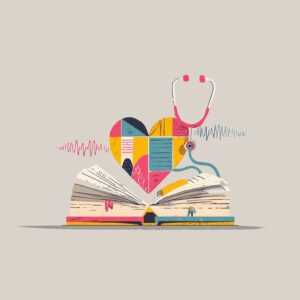
Clarity of communication is important across many different parts of our lives. In those aspects of public life where sharing messages at a population level – healthcare, justice, education – whole strategic programmes have been developed aimed at connecting people with the information vital to safe and responsible living within societies.
The balance of the initial efforts in these spheres was on public education – making people aware of sometimes complex concepts and terms so they could navigate difficult systems and maze-like bureaucracies.
The second generation of the work looked at simplifying systems to make them more understandable in the first place. The idea was to remove the need for so much public education in how to operate and live with the complex systems, by reducing the complexity from the outset.
The “third way” can be characterised as focusing on collaborative design to raise levels of knowledge of all sides, while managing complexity through shared understanding. In some senses this embraces the idea that things can and sometimes have to be complicated, but this can be balanced by building commonly held confidence and knowledge.
At each level, different tools have been deployed to support understanding. In the healthcare sector, health literacy programmes were initially focused around things like patient leaflets and information. In situations where understanding needed to be clear prior to visiting a hospital, for example, a leaflet would be sent. These were often written in overly-complex language, were almost instantly out of date in the information they contained, and brought as much confusion as they did clarity.
More collaborative approaches led to improved information transmitted in ways that built shared understanding, in a range of formats that suited needs. Advances in technology meant that information could be more dynamic, up-to-date and relevant. Factors about the experience of visiting hospitals that didn’t just focus on the health interaction – car parking, public transport links, the logistics of getting around hospitals – could be factored in to allow people to arrive at their appointments not only on time, but in a relaxed frame of mind.
And protecting that interaction at the heart of healthcare – the conversation between people and their practitioners – is where lots of the good work in this area still focuses.
Whether it’s with healthcare systems, schools, the courts or other public institutions, there is a need to consider things in more inclusive and equitable ways. This wider view taps into the ideas of “what really keeps you well?” and “what matters to you?” in the sense of how people are best supported to live their lives to the fullest. This rarely relates to pills, medicines, leaflets or appointments. It relates to the wider connectivity across communities that we need to thrive.
Tools and techniques are rarely solutions in isolation. They need to be set in context. But there are approaches that offer flexibility for people that can be deployed in a range of ways.
Storytelling is a common and unifying thread. Stories provide structures – beginnings, middles and ends – that are often missing when we interact with administrations. Stories are commonly held, shared with our friends, widely understood, and offer common reference points.
Our methods for consuming stories have evolved over time, from oral history, to written texts, the eBooks and digital versions, to audiobooks. Stories are always on the go and have always moved with us.
It’s this sense of the journey that sometimes fails us when trying to navigate complex systems. Sometimes we don’t even start the journey because the road looks too twisty and turning to even attempt. A friend to motivate us to start, a kind word of reassurance from an experienced voice that has trodden the path before, can be transformational.
Perhaps when trying to communicate consistently and at scale, there’s something to be said about reflecting on the personal in building more approachable voices and faces for organisations.
Personalised audiobooks can create bespoke versions of information leaflets, guiding documents, or navigational aids. It can also transmit warmth, connection and inclusion in ways that words on a page can’t always. It can be the difference that removes uncertainty for someone when dealing with an organisation or care setting for the first time. Hearing a message in a friendly or familiar voice can provide the motivating reassurance that’s so often missing from good first interactions.
Making the complexity of the modern world easier to interact with is no small task. It requires careful, collaborative thinking and design. When thinking about how we humanise and personalise those interactions, personalised audio is a powerful emerging tool to consider.
